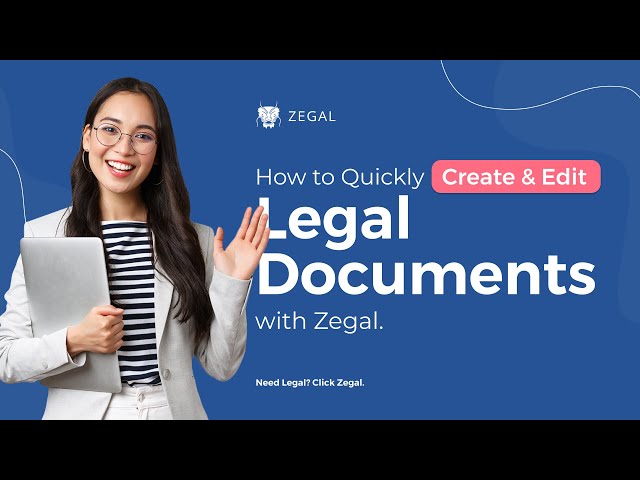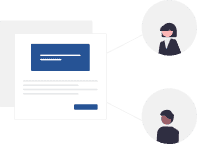How to generate a Loan Agreement
What is a Loan Agreement?
A Loan Agreement is a crucial contract between a borrower seeking capital and a lender providing it. This agreement outlines the terms and conditions of the loan, ensuring clarity and mutual understanding between both parties.
Key elements of a loan agreement
- Parties Involved: Specifies the borrower and lender’s details, establishing the contract’s legality.
- Principal Amount: The actual sum lent to the borrower, with provisions for its repayment and balance updates.
- Loan Term: Defines the duration of the loan and the payment schedule.
- Interest Rate: Determines the cost of borrowing, usually specified annually or monthly.
- Payment Details: Clarifies when and how repayments should be made, including the due date and payment method.
- Late Fees and Default: Details the consequences of late payments or failure to meet the loan obligations, outlining the default conditions.
- Collateral Requirements: For secured loans, specify the assets that can be used as collateral, including both tangible and intangible assets, to secure the loan.
When to use a Loan Agreement
A loan agreement is vital when formalising the borrowing and lending of money is needed. It protects the lender by specifying the conditions under which the loan must be repaid. It safeguards the borrower by defining the loan’s terms, including the interest rate and repayment schedule.
Secured vs. unsecured Loan Agreements
The choice between secured and unsecured loans depends on the borrower’s background and the lender’s risk tolerance. Secured loans require collateral, offering lower interest rates due to reduced risk for the lender. Unsecured loans, while more challenging to obtain due to the lack of collateral, necessitate a solid financial background from the borrower and usually carry higher interest rates.
Prepayment fees and penalties
Prepayment penalties are included to compensate lenders for the loss of expected interest revenue when loans are repaid early. These penalties can vary, often being a percentage of the outstanding loan amount or equating to several months of interest payments.
Understanding loan terminology
- Sharking: An illegal practice where excessively high-interest rates are charged.
- Consolidation: Combining multiple loans into a single one with a potentially lower interest rate simplifies repayment.
Purpose and types of Loan Agreements
Loan agreements formalise the lending process, detailing the loan’s terms and protecting both parties. They can be commercial, involving companies, or personal, based on an individual’s financial standing.
- Commercial Loan Agreement: Specifically designed for business transactions, it can be secured or unsecured, with the former requiring additional security documents.
- Flexible Loans: Flexible loans, including revolving credit facilities, provide adaptability that is not found in standard loan agreements. They allow borrowers to draw down, repay, and redraw funds as needed, offering a solution that can adjust to changing financial requirements. This can be particularly advantageous for managing operational cash flow or financing ongoing projects without needing multiple loan agreements.
Secured commercial loans often involve collateral, such as real estate, to mitigate lender risk, offering more access to capital and lower interest rates. Unsecured loans, lacking collateral, demand a solid financial history from the borrower and come with higher interest rates due to increased lender risk.
Special types of loan agreements
For different borrowing and lending scenarios, specialised loan agreements like an Intragroup Loan Agreement facilitate loans within the same corporate group, providing flexibility and financial optimisation between affiliated companies.
Another variant, the Revolving Loan Agreement, offers borrowers a flexible credit facility up to a maximum amount, allowing for repeated borrowing and repayment during the agreement’s term. This is particularly useful for businesses needing ongoing access to funds.
For loans involving company directors, a Director Loan Agreement outlines the specifics when a director borrows from or lends to their own company, ensuring that the terms are clear and the transaction complies with legal requirements.
Loan agreement template
A Loan Agreement is fundamental in any borrowing scenario. It ensures both the borrower’s and lender’s rights are protected while providing a clear framework for the loan’s terms.
Create one in minutes with Zegal.
Stay compliant with the Zegal template library
Zegal legal template are meticulously crafted with the precision of AI and the expertise of seasoned human lawyers, providing a unique blend of speed and reliability.
You can trust that Zegal agreements are legally sound and fully compliant with current regulations.
Whether you're a startup, SME, or a larger enterprise, Zegal contract management will automate and speed up your legal processes.
Using Zegal will reduce risk, save money, and improve efficiency. Let us take care of the paperwork so you can focus on running your business.
Don’t compromise on speed or compliance. Stay secure, compliant, and efficient with Zegal.







